In the sports supplement world, we spend a lot of time talking about the pump. Usually, this is in a weightlifting context, where bodybuilders and powerlifters enjoy muscular swelling for aesthetic reasons – or just because it feels awesome.
But behind the visual manifestation of the pump are some key mechanisms of action – including nitric oxide mediated vasodilation – that can really help improve performance. And not just by increasing top-end power, or helping you squeeze out another rep or two at the squat rack, but by boosting endurance and improving recovery, too.
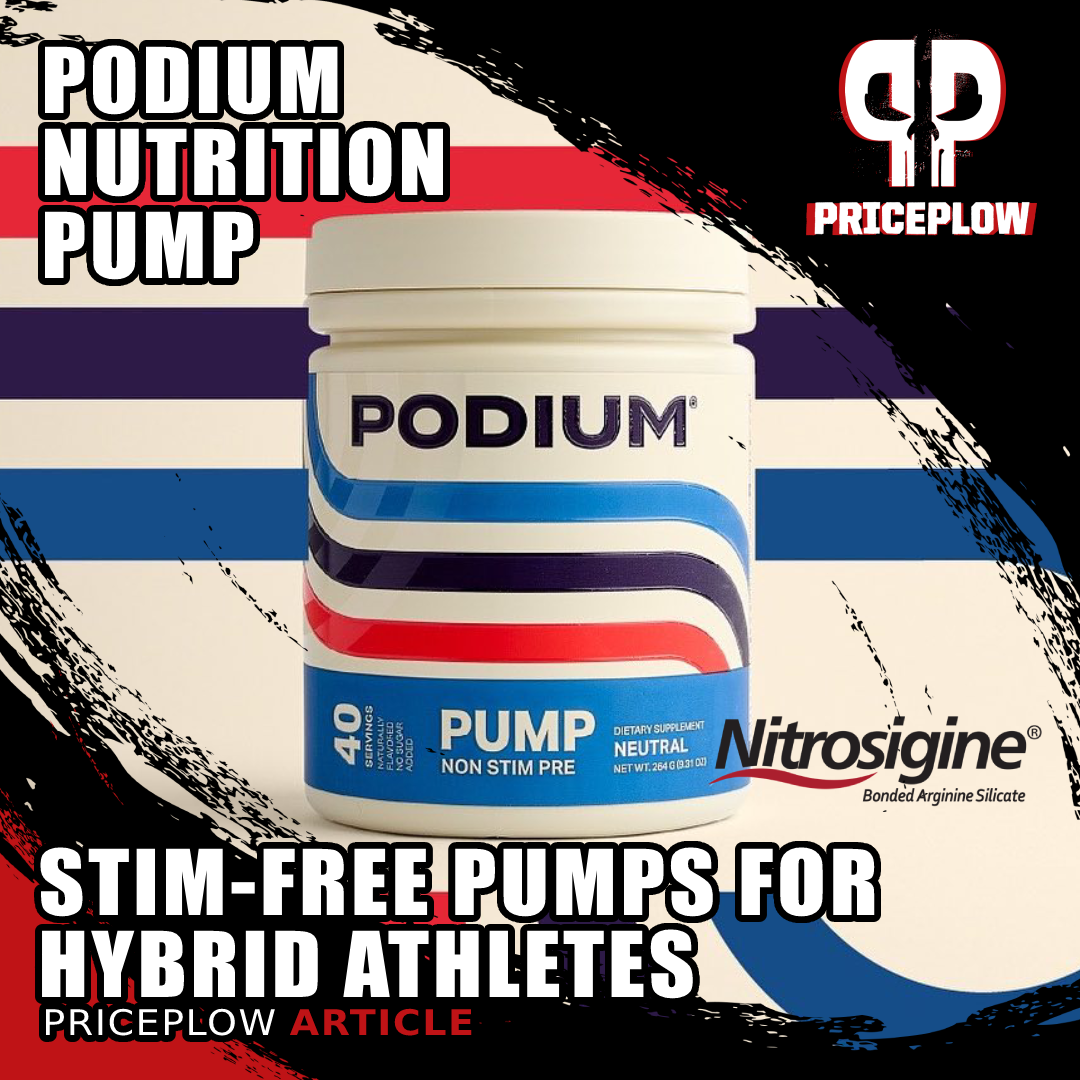
Podium Nutrition PUMP is a non-stim pre-workout for hybrid athletes, powered primarily by a combination of Nitrosigine and L-citrulline
Podium Pump: Stim-Free Pre-Workout Support for Functional Athletes
That's where products like Podium Pump come in. As its name suggests, this is for ambitious functional athletes – think CrossFit – who want to win contests of hybrid athleticism (meaning strength and endurance). You know it's going to be good when Mat Fraser, "World's Fittest Man", is involved in the brand!
With 6 grams of L-Citrulline paired with another gram of Nutrition21's Nitrosigine alongside an efficacious 2 grams of taurine and some added dextrose, Podium Pump can perfectly support the workout needs of Podium's functional athletes.
We're glad to be covering this today because we think it's a frequently overlooked field of athletic performance and supplement science -- and having spoken to Podium's leadership team, we think they're on to something big here.
So let's get into how Podium Pump can help you crush the competition during your local gym's next WOD, but first, check PricePlow's coupon-powered deals and sign up for our Podium news and alerts:
Podium Nutrition PUMP Non-Stim Pre – Deals and Price Drop Alerts
Get Price Alerts
No spam, no scams.
Disclosure: PricePlow relies on pricing from stores with which we have a business relationship. We work hard to keep pricing current, but you may find a better offer.
Posts are sponsored in part by the retailers and/or brands listed on this page.
Podium Pump Ingredients
In a single 2-scoop (13.2 gram) serving of Podium Pump from Podium Nutrition, you get the following:
-
L-Citrulline – 6,000 mg
The amino acid citrulline is the supplement industry's favorite nitric oxide (NO) booster.[1]
Citrulline is a conditionally essential amino acid. This means that while your body can make citrulline on its own, it can't necessarily make enough to fully cover your metabolic requirements. This means we can almost always stand to benefit from some supplemental citrulline.
Your body converts citrulline into NO by the following pathway:
Citrulline → Arginine → Nitric Oxide
You've probably noticed that arginine is actually the direct precursor to NO – so why not take arginine instead? The answer is that citrulline is more orally bioavailable than arginine.[2,3]
Why do we want more NO?
NO triggers a mechanism called vasodilation in which your blood vessels expand in diameter. Thus, you get the same volume of blood in a bigger arterial space, leading to decreases in blood pressure and heart rate that[4-6] help you perform better at the same level of cardiovascular exertion.
Vasodilation can also benefit performance and recovery by increasing the efficiency of nutrient delivery to, and waste removal from, your body's cells.
Studies on citrulline show that it can:
The Arginine Citrulline Cycle with a breakout showing the arginine-to-nitric oxide reaction. Image courtesy Wikimedia with added biochemistry sources.[7,8]
- Increase power by improving oxygen uptake[9]
- Prolong athletic endurance by about 50%[10]
- Reduce post-exercise muscle soreness[10]
- Upregulate exercise-induced growth hormone (GH) secretion[11]
- Inhibit protein catabolism[12]
- Increase the anabolic response to exercise[13,14]
Citrulline can also upregulate your body's production of ornithine,[15] an amino acid that's involved in clearing ammonia from your blood and tissues.[16] Since the accumulation of ammonia in your tissues can produce both mental and physical fatigue, upregulating ornithine can help increase athletic endurance and improve recovery.
Ornithine has also been shown to improve the ratio of cortisol to DHEA, which can improve sleep.[16]
-
Taurine – 2,000 mg
Taurine is an osmolyte, meaning it can help improve cellular hydration.[17]
A 2018 meta-analysis found that even a single 1,000 milligram dose – only half the dose used in Podium Nutrition Podium Pump – is enough to acutely increase athletic endurance.[18]
Taurine is also an important antioxidant[19] that helps facilitate calcium signaling between muscle cells,[20] thus supporting muscular contractions. Taurine's calcium-regulating properties can also help it support mitochondrial homeostasis, protecting mitochondria from excitotoxic stress.[21]
Like citrulline, taurine is a conditionally essential amino acid.[17,18,22] This means that if you're training hard, you probably will benefit from some supplemental taurine.
Finally, taurine is GABAergic and can help downregulate neuronal inflammation and support neuronal mitochondria while improving inter-synaptic signaling.[22]
Taurine is great for mental and physical performance, which is why we love seeing it in pre-workout formulas like Podium Nutrition Podium Pump.
-
Dextrose – 1,500 mg
The recent popularity of low-carb diets notwithstanding, every endurance and hybrid athlete knows the importance of staying carbed-up for maximum muscle glycogen and, hence, optimum performance. So how should we get those carbs? It's common to see people reaching for honey, or sugar-sweetened beverages. However, if your goal is to fuel athletic performance, these fructose-containing carbs are not the best way to go.
Ample research shows that muscle glycogen synthesis is more efficient with glucose than it is with fructose.[23-26] Since dextrose is chemically identical to glucose (it's D-glucose, hence the name "dextrose"),[27] it's an obvious choice as an affordable pre-, intra-, or post-workout carb that also tastes great.
That's because fructose gets processed by your liver, which turns it into liver glycogen.[23-25] Fructose is also absorbed more slowly than glucose/dextrose,[28,29] and must be converted into glucose[29-31] before your body can use it, which is a slow process.[32]
Since muscle glycogen, as opposed liver glycogen, is what we're after, it makes sense to see dextrose appear in Podium Nutrition Podium Pump.
-
Nitrosigine (Inositol-Stabilized Arginine Silicate) – 1,000 mg
Synergizing alongside the citrulline, Podium Pump also has a gram of Nitrosigine, the industry's premier patented NO-boosting ingredient made by Nutrition21,[33] and a personal favorite of the PricePlow staff.
Nitrosigine is primarily found in pre-workouts due to its ability to boost nitric oxide levels... but don't forget about its cognitive-supporting capabilities when dosed at 1.5 grams per day!
As we briefly mentioned in the citrulline section of this article, the whole reason citrulline came into favor is because the bioavailability of arginine is, to put it mildly, not great.[34-37] When scientists discovered citrulline is vastly more bioavailable,[38] using citrulline as a precursor to arginine, and then to NO, was an obvious solution.
Nutrition21, however, attacks the problem from a different, more direct, angle. Nitrosigine is a better form of arginine, engineered to have long lasting bioavailability. It is a patented and trademarked complex of arginine, inositol, and potassium silicate[33] that has been clinically studied at 1.5 grams to promote nitric oxide production for improved blood flow, better cognitive function, and energy.
Fast-acting, long-lasting, and effects that can build over time
Nitrosigine is both fast-acting and long-lasting, with NO levels rising as soon as 30 minutes after ingestion[39] and staying elevated for up to 6 hours.[40]
Beyond that, there's also evidence that the effects of Nitrosigine build up over time, as repeated intakes trend towards higher plasma arginine levels.[39] Research indicates that muscle pump benefits are most pronounced after several days of use,[41] and the cognitive research performed at 1.5 grams per day suggests that the benefits may be sustained with repeated intake.[42,43]
Nitrosigine and the brain
As mentioned above, Nitrosigine has an amazing body of research showing cognitive benefits. However, this research has all been performed at 1.5 grams per day,[42-44] which is greater than the dose here in Podium Pump. Those studies demonstrate benefits such as preventing post-workout cognitive decline,[43] greater cognitive flexibility,[42] improved feelings of energy,[45] and improved short-term memory performance[44] -- but again, they used a 50% greater dose than what we have in two scoops here.
There's even more to say about this awesome ingredient, especially at the 1.5 gram dose level, so if you're interested, read our long-form post titled "Nitrosigine: The Nitric Oxide Booster That Enhances Brain Function".
A new study published in late 2021 showed that Nutrition21's Nitrosigine improves working memory and cognitive function in healthy young adults when dosed at 1.5 grams per day.[44] Read more about it in our article titled "Study: Improved Working Memory from Nitrosigine in Healthy Young Adults".
-
Betaine HCl – 1,000 mg
Betaine, also known as trimethylglycine (TMG), is a potent ergogenic aid.[46] It is, like taurine, an osmolyte, meaning it can help increase the water content of your cells and improve hydration status.[47,48] Extra water brings more nutrients to cells and makes them more resilient to heat stress[49] and other environmental stressors.[50]
Betaine is an important methyl donor,[51,52] meaning it carries methyl groups (formula -CH3) to the sites of various metabolic processes like DNA methylation, protein metabolism, and energy production. One of methylation's most important functions is to regulate the amount of homocysteine in blood – if this process is compromised by methyl group deficiency, homocysteine levels can rise too high,[53] which can cause cardiovascular damage and disease.[48,54]
Research shows that betaine supplementation can significantly improve strength, power, athletic endurance, and body composition, but again, much of it comes at higher doses, such as 2.5 grams per day (and sometimes even 5 grams).[47,55-62]
Betaine HCl over anhydrous?
What's unique about this ingredient here is that normally we see betaine anhydrous, whereas here, we have the hydrochloride form. We asked Podium why they made this decision -- they stated it was best for the Neutral flavor system:
Betaine HCl separates in solution, so Betaine HCl was used to offset the basicity of the formula for taste purposes, given the main formula is meant to be neutral in taste. Allowed us to keep the "Neutral" naturally flavored and naturally sweetened.
-- Podium Nutrition
That's pretty interesting and cool to know.
-
Pine (Pinus elliottii) [Bark] Extract – 200 mg
Pine bark extract is another NO boosting ingredient – it's full of phenolic antioxidants[63,64] that have been shown to upregulate endothelial nitric oxide synthase (eNOS),[63,64] the enzyme responsible for generating NO in your arteries.
A nitric oxide booster that improves cognition?! Yes - Nutrition21 passed around this helpful infographic after the Nitrosigine cognition study on healthy young adults was published at 1.5 grams per day.[44]
Thanks to its vasodilatory, antioxidant and anti-inflammatory properties, pine bark extract has been used as a traditional treatment for cardiovascular diseases, and support for cardiovascular health.[63,64]
One study suggests that pine bark extract's anti-inflammatory effects are strong enough to confer neuroprotective benefits.[64]
-
VasoDrive-AP (Casein Hydrolysate) – 100 mg
VasoDrive-AP combinestwo specific tripeptide proteins derived from the casein fraction of milk: isoleucyl-prolyl-proline (IPP) and valyl-prolyl-proline (VPP).[65] They're sometimes referred to as lacto-tripeptides (LTPs).
VasoDrive triggers vasodilation by two complementary mechanisms. First, it does upregulate endothelial nitric oxide synthase (eNOS), thus directly increasing the amount of NO your body produces.[66]
But it also inhibits vasoconstriction by downregulating an enzyme called angiotensin-converting enzyme (ACE).[65] As you probably know, ACE inhibitors are prescribed to treat high blood pressure, making this an interesting ingredient to see in a pre-workout.
Massive effect sizes at low (10mg/day) doses!
According to a 2016 meta-analysis, casein-derived LTPs can help reduce blood pressure by about the same amount as more proven NO-boosting ingredients. On average, IPP and VPP doses in the ballpark of 10 milligrams per day reduces systolic blood pressure by about 3 mmHg and diastolic blood pressure by about 1.5 mmHg. In some of the studies reviewed by this meta-analysis, effect sizes on the order of 10 systolic and 6 diastolic were observed.[65]
By comparison, citrulline has been shown to reduce systolic blood pressure by about 4 mmHg at standard doses.[67]
While we're used to seeing larger doses of VasoDrive-AP, we're realizing that a plethora of successful research has been conducted at far lower doses -- such as the meta analysis cited above with just ~10 total milligrams per day.[65] This is in line with Podium's strategy for functional/hybrid athletes, as discussed in the Nitrosigine section -- we're shooting for performance-based blood flow improvements, not muscle swelling to the point of reduced functionality.
-
Setria L-Glutathione – 100 mg
Glutathione (GSH) is the body's master antioxidant. Your body makes its own GSH – however, as is often the case, its capacity for GSH production doesn't necessarily cover all requirements. Thus, for many people, supplemental exogenous GSH can help improve health and performance.[68]
Made by Kyowa Hakko, Setria has been shown to help improve immunity by enhancing detoxification and decreasing oxidative stress,[69] which has made it a popular choice for health and wellness supplements.
Synergistic effects between Setria and Citrulline
We've seen Setria show up in a few pre-workout formulas.[70,71] The combination of these two ingredients has been shown to cause synergistic and sustained rises in nitric oxide (NO) levels.[70] They also appear to synergistically improve lean muscle mass and muscular strength,[71] although more research is needed to confirm those findings.
-
AstraGin (Panax notoginseng [Root] Extract and Astragalus membranaceus [Root] Extract) – 50 mg
AstraGin is a patented bioavailability enhancer from NuLiv Science.[72-76]
It consists of specific bioactive constituents extracted from Astragalus membranaceus and Panax notoginseng, two plants with a long history in traditional Chinese medicine. These bioactive constituents upregulate adenosine triphosphate (ATP) in the intestines, which can then use the extra ATP to facilitate nutrient transport into the bloodstream.[77,78]
Internal studies have demonstrated that AstraGin can increase the bioavailability of amino acids, vitamins, and other nutrients.[68] For instance, it's been shown to "promote intestinal epithelial repair by enhancing L-arginine uptake" and "activate the mTOR pathway",[79] and as you know, we have a bonded form of inositol-stabilized arginine silicate in here from Nitrosigine!
Ultimately, this ingredient is maximizing the value you get for your dollar from Podium Nutrition Podium Pump – after all, supplements do you no good if your body can't absorb them.
In summary, this is a very wisely formulated pump supplement for Podium's hybrid athlete demographic -- not grossly too much like some of our bodybuilding readers always want, but definitely not too little.
Flavors Available
It's not just flavored -- you can also get an unflavored Neutral version that can be stacked into one of their flavored pre-workouts (like FUSE Pre-Workout or HWPO Athlete Pre-Workout) or even their flavored Podium Creatine Monohydate supplement!
Here's the current list of Podium Pump flavors:
Conclusion: Podium Pump Brings Nitric Oxide to Functional Training
Podium Pump is a powerful and focused formula – every ingredient is here to either improve circulation by upregulating NO or help your muscles do more work.
It's been a while since we last saw a compelling entry in the hybrid athlete pre-workout category, but Podium Nutrition Podium Pump is definitely one that we'll be giving a go, especially when the training calls for it.
Having spoken to the Podium team, we are 100% confident that this brand is on to very big things -- and not just because of the athletes they sponsor. Stay tuned to PricePlow's Podium Nutrition news alerts below, there's a lot more coming:
Podium Nutrition PUMP Non-Stim Pre – Deals and Price Drop Alerts
Get Price Alerts
No spam, no scams.
Disclosure: PricePlow relies on pricing from stores with which we have a business relationship. We work hard to keep pricing current, but you may find a better offer.
Posts are sponsored in part by the retailers and/or brands listed on this page.
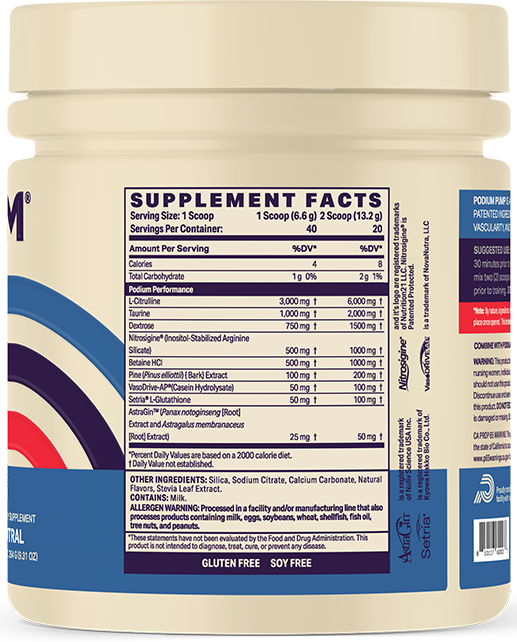
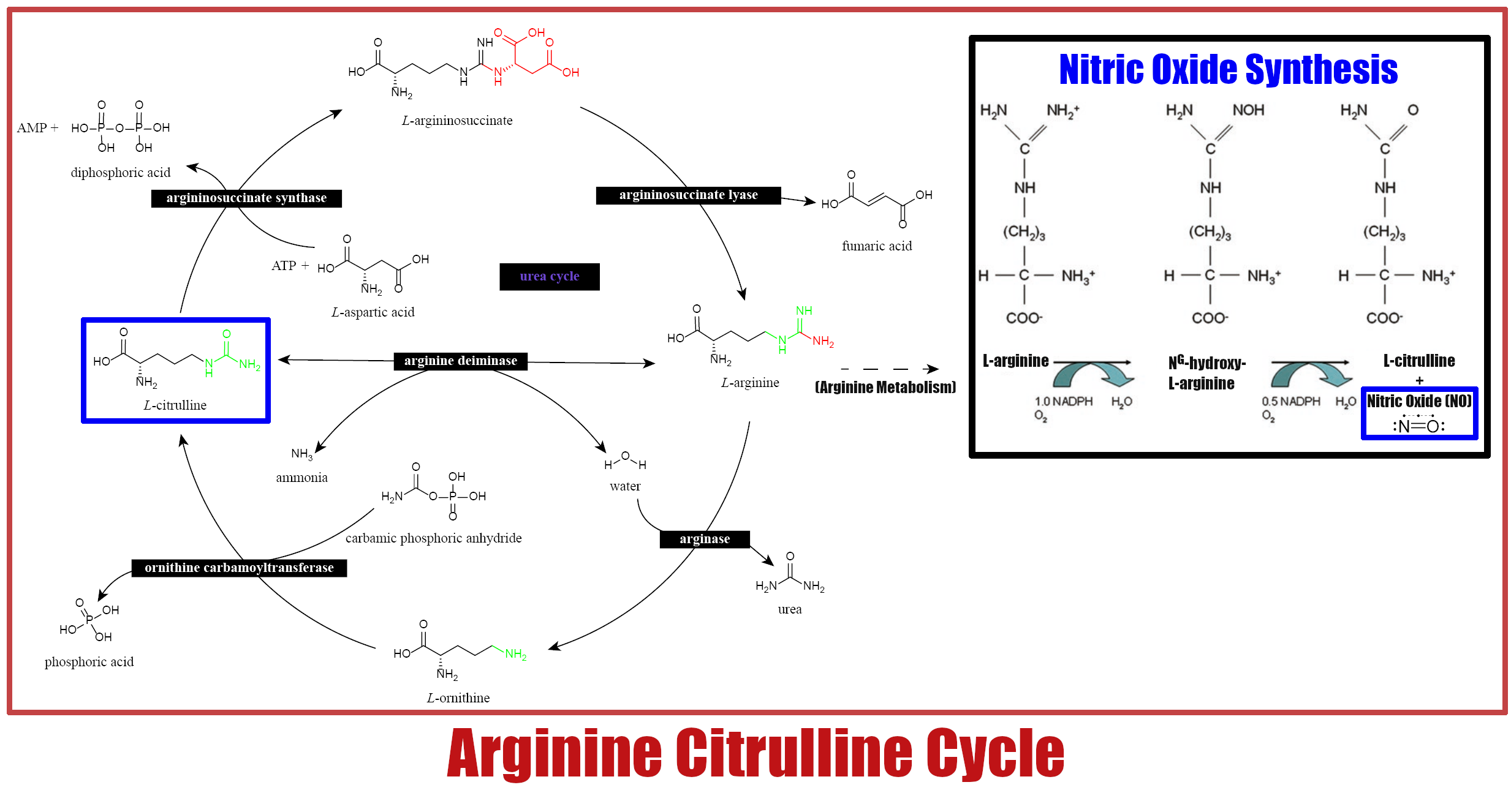
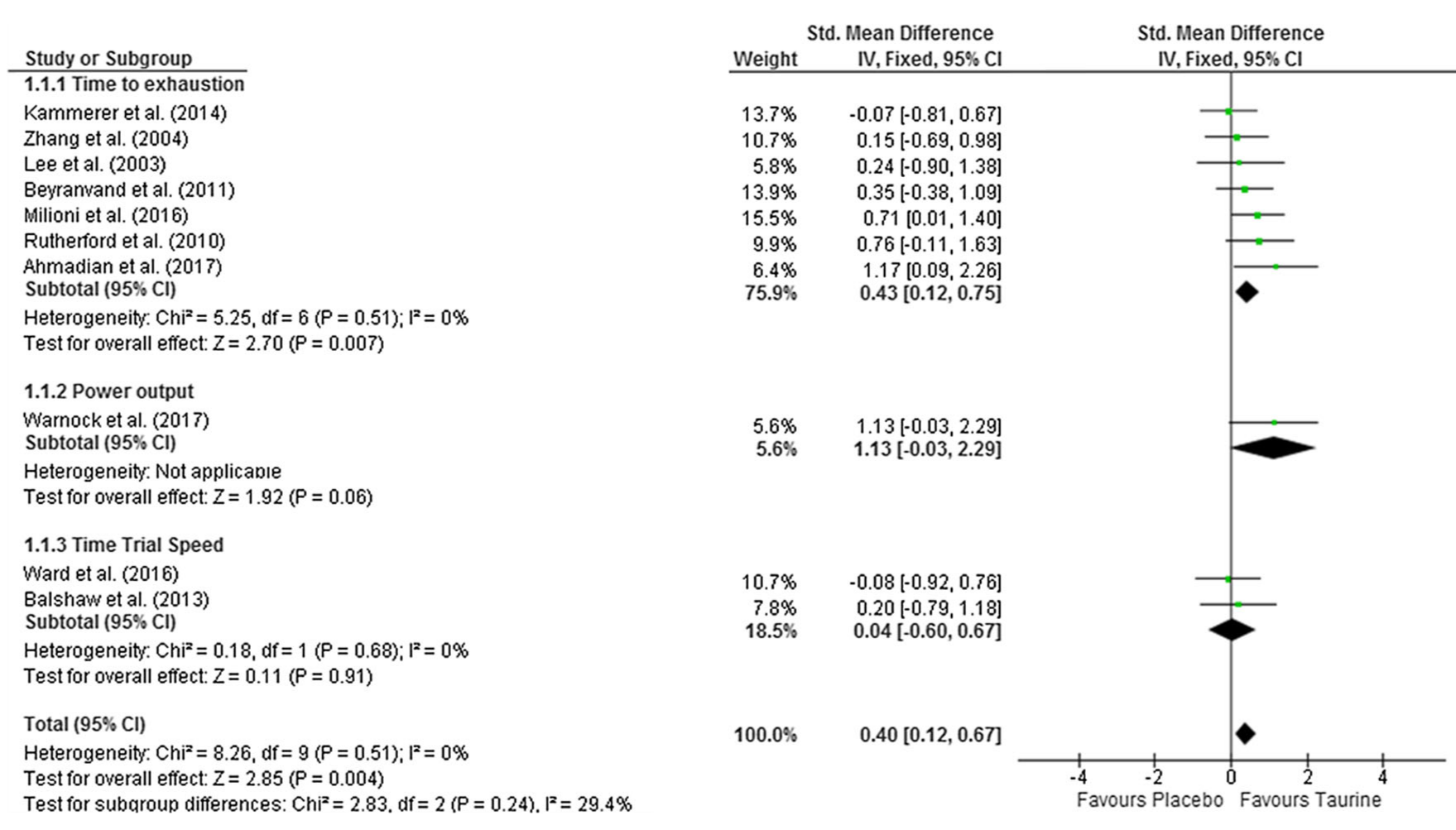
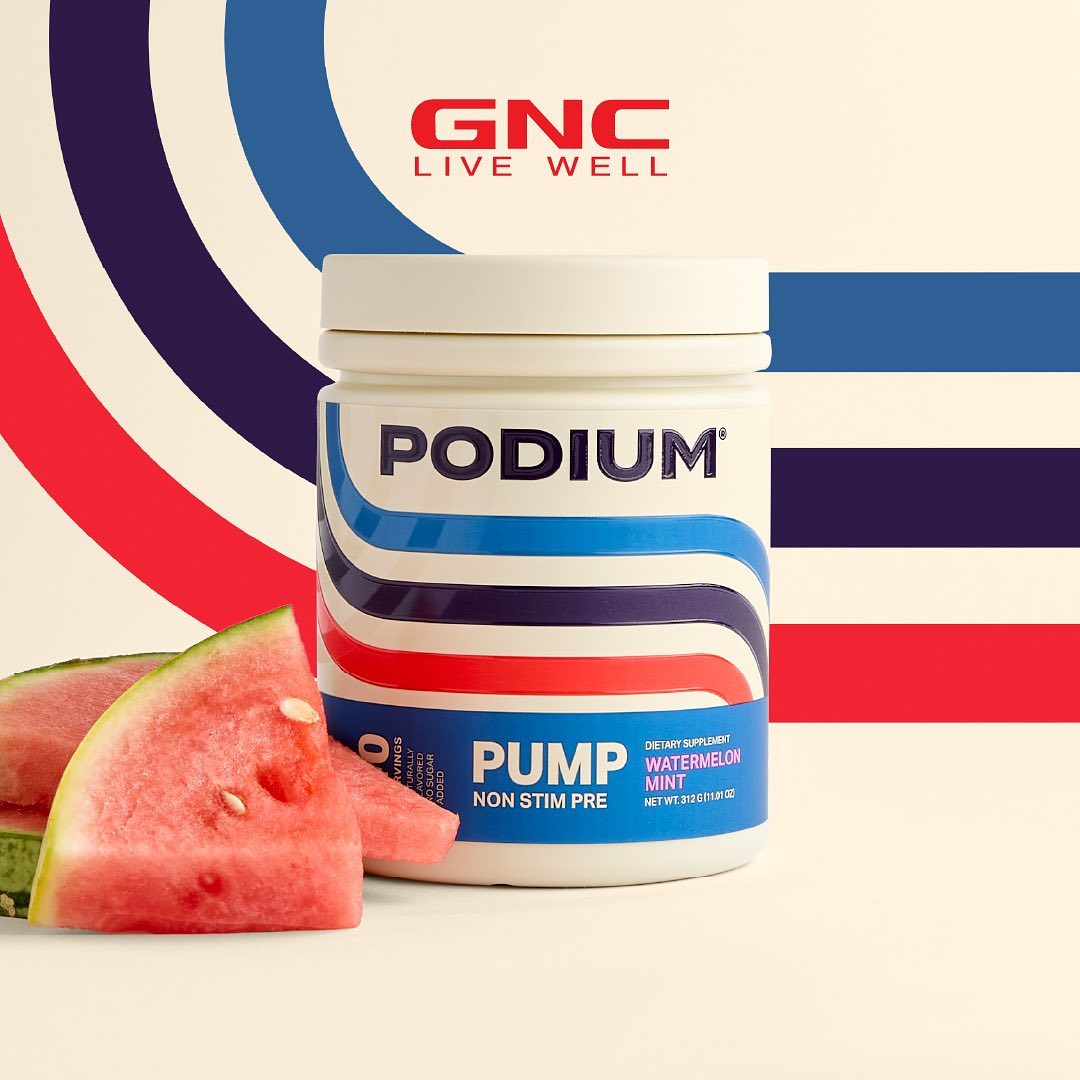
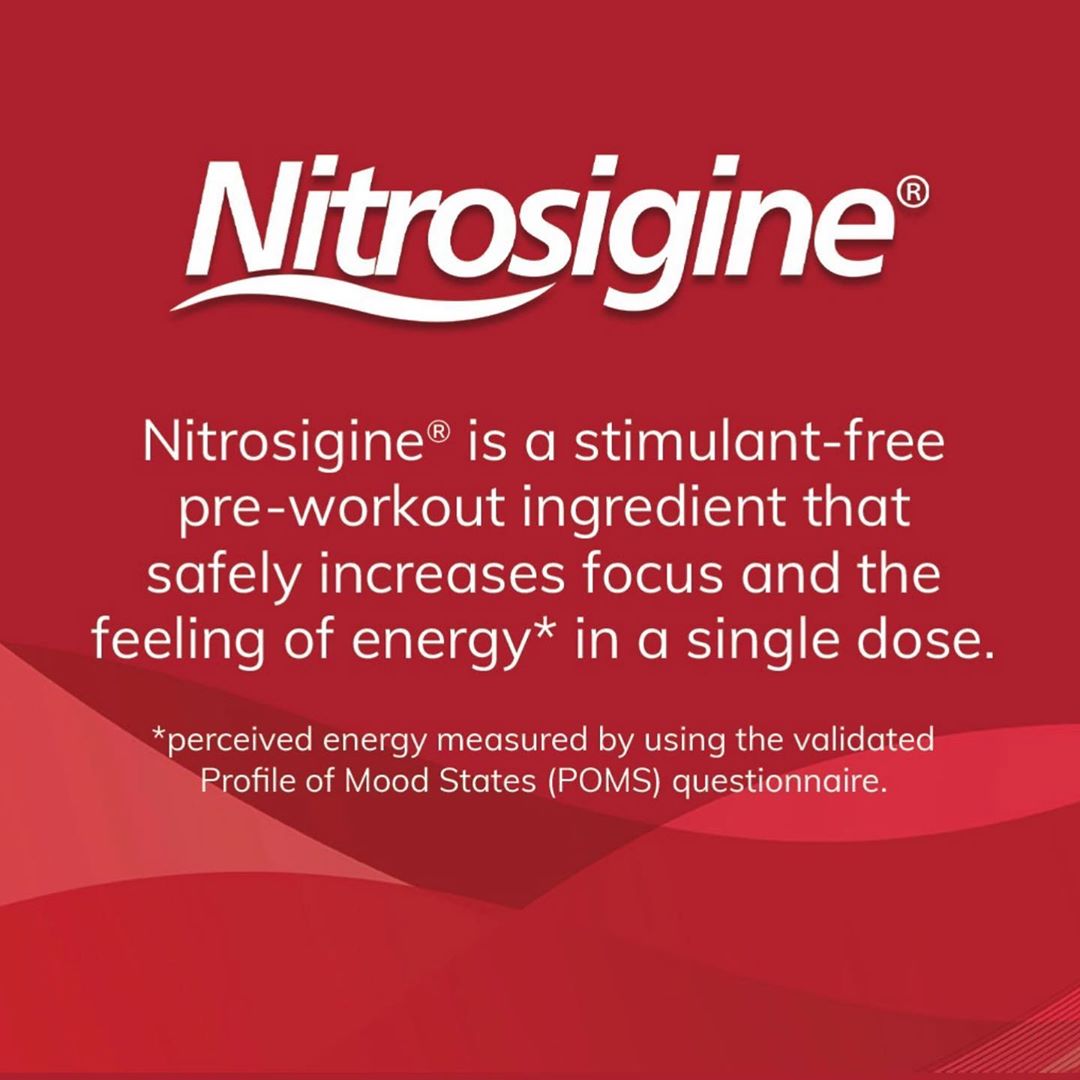
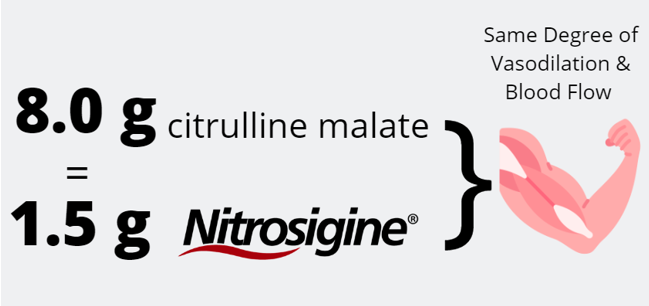
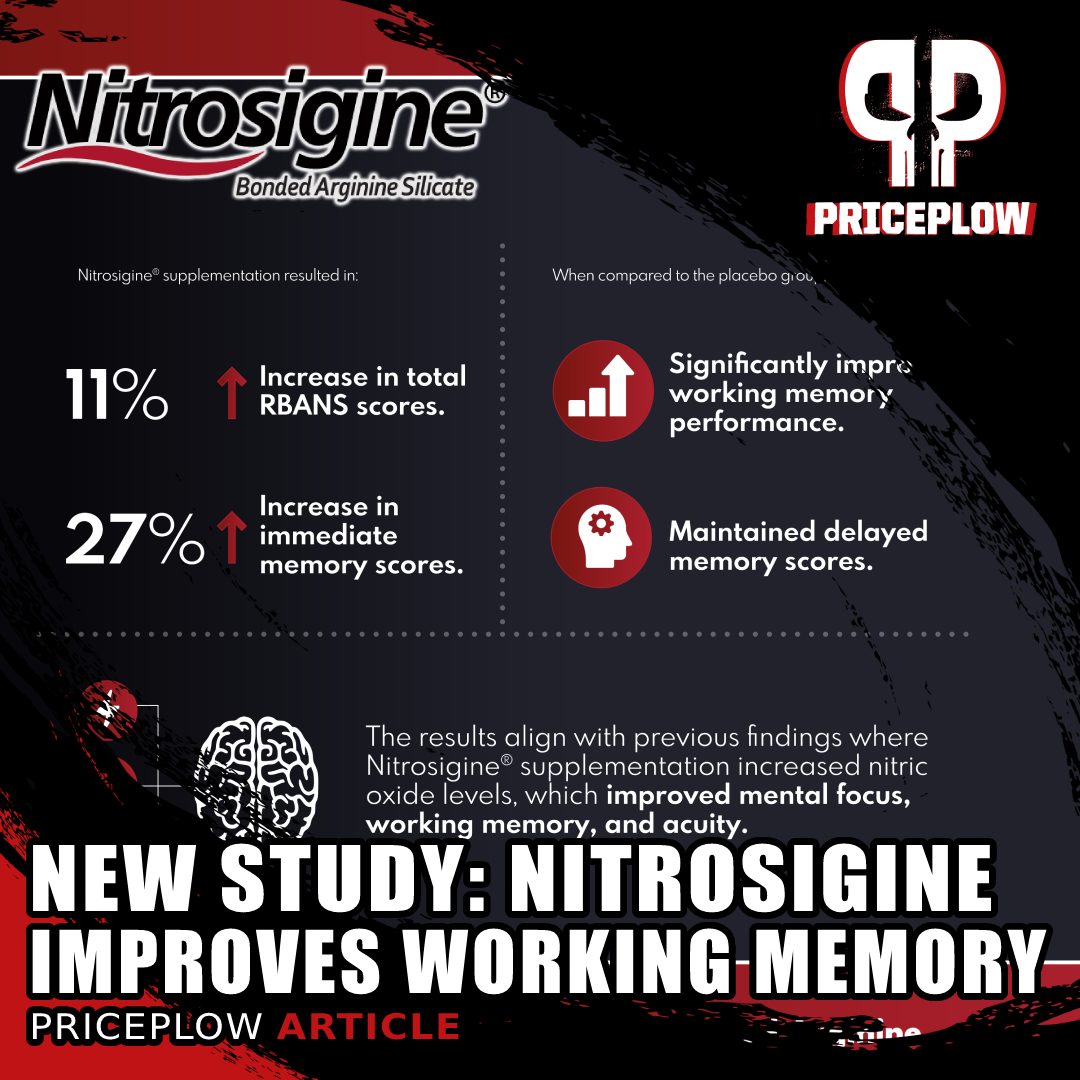

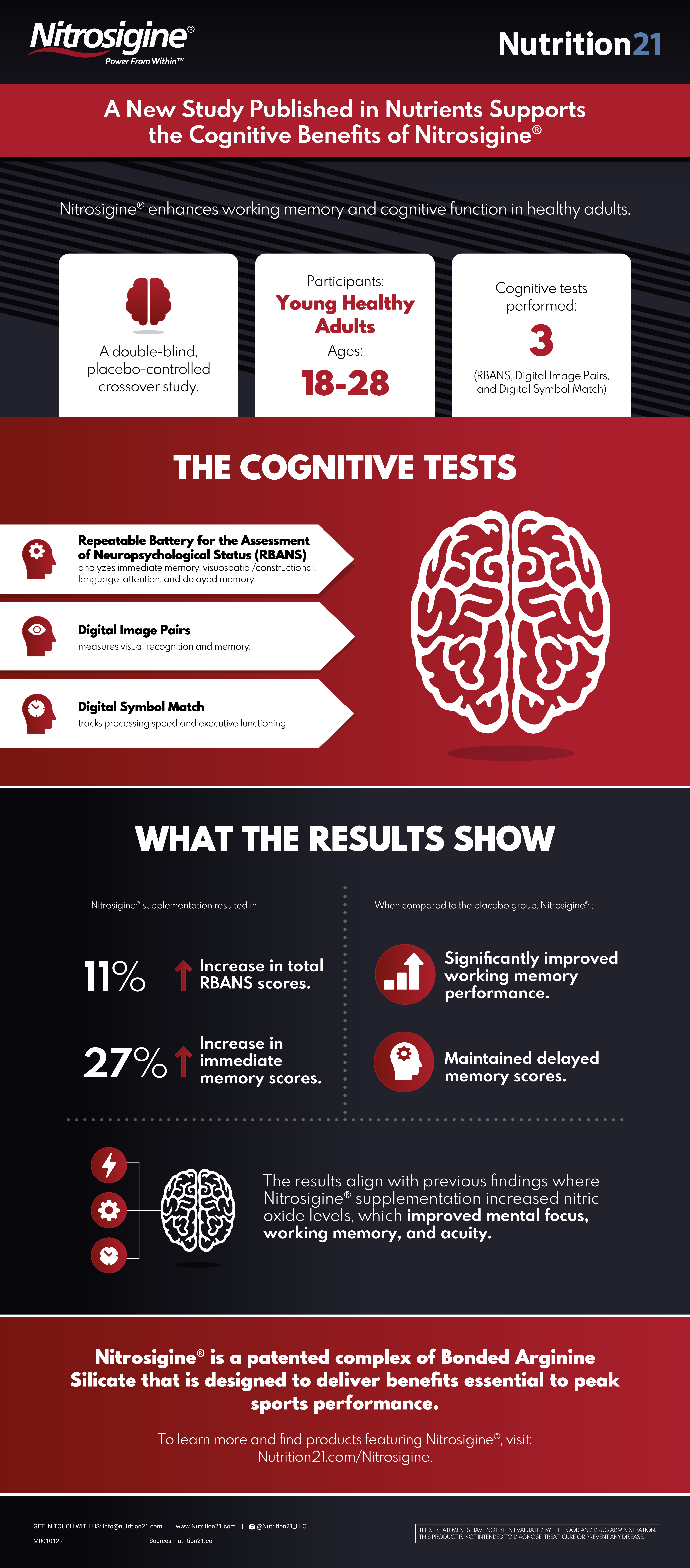
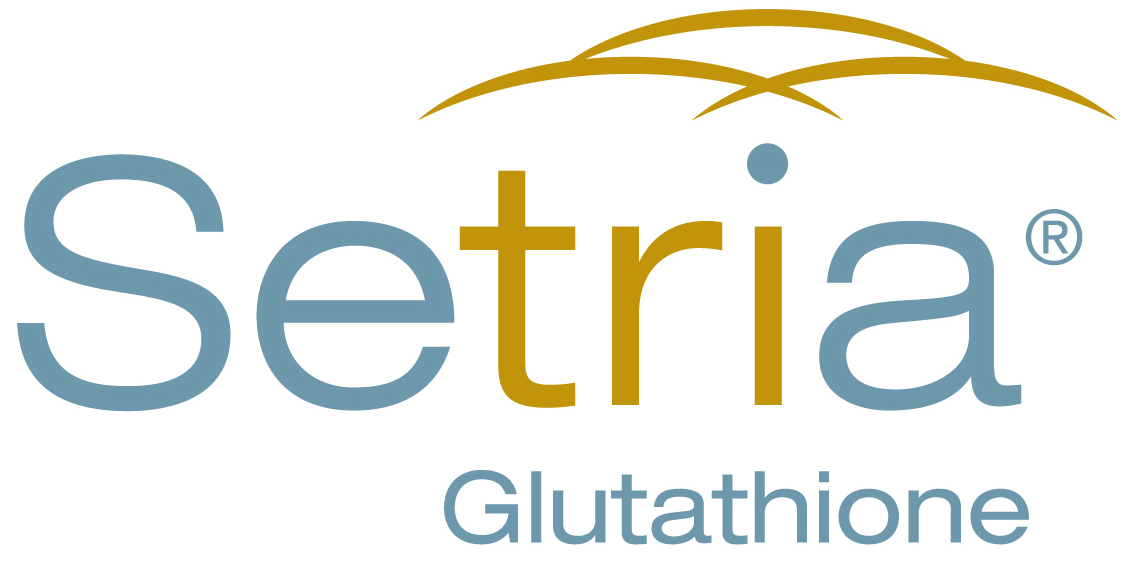
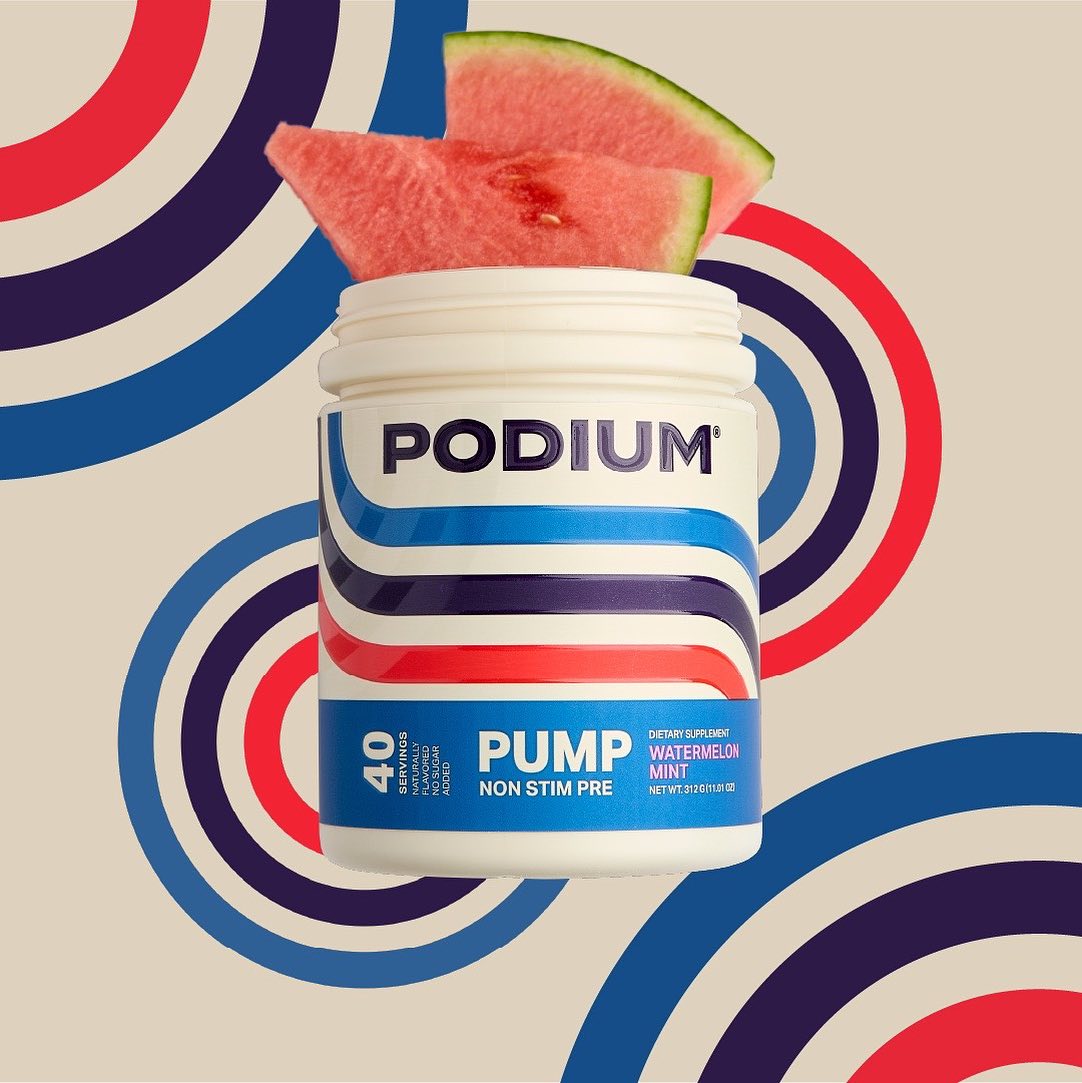
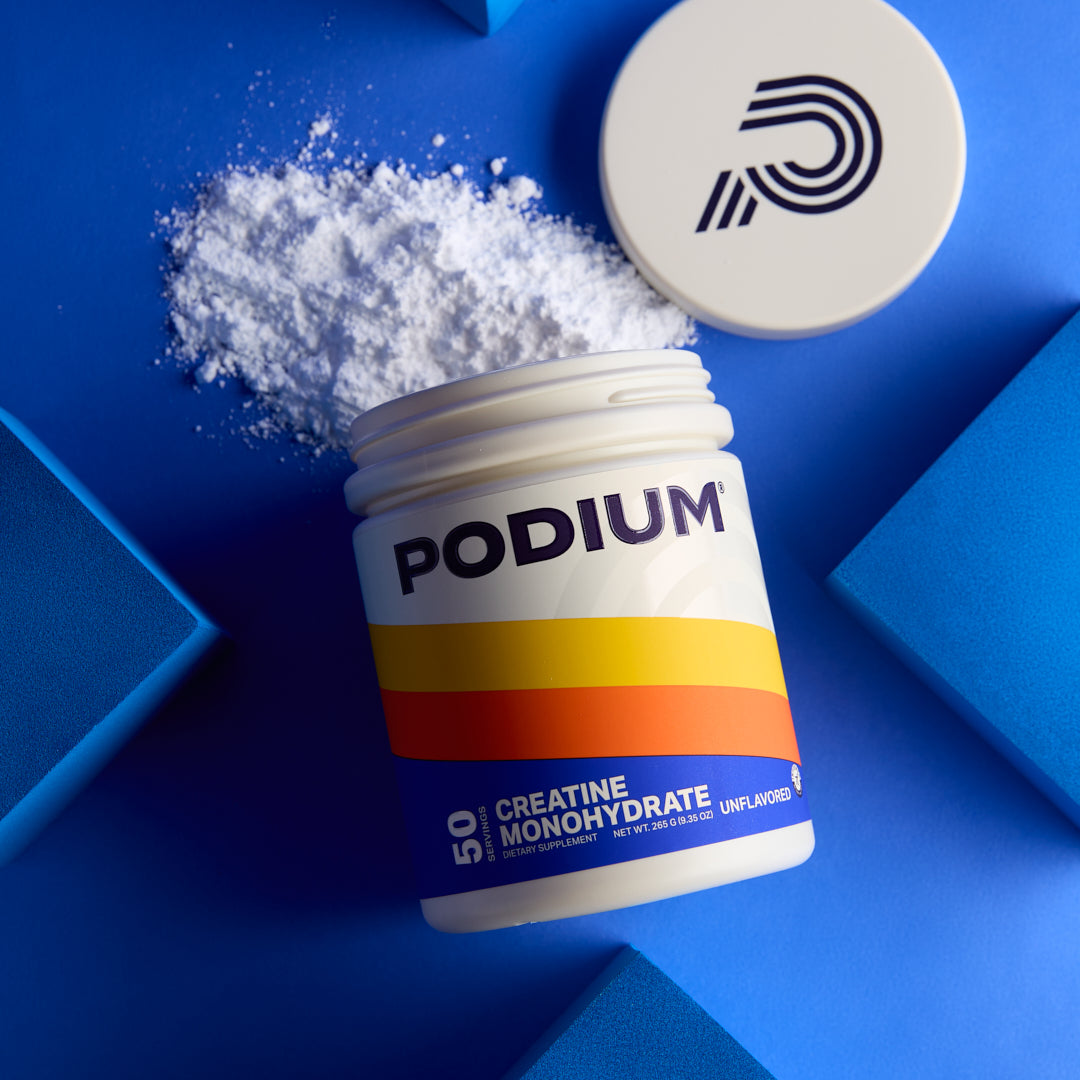


Comments and Discussion (Powered by the PricePlow Forum)